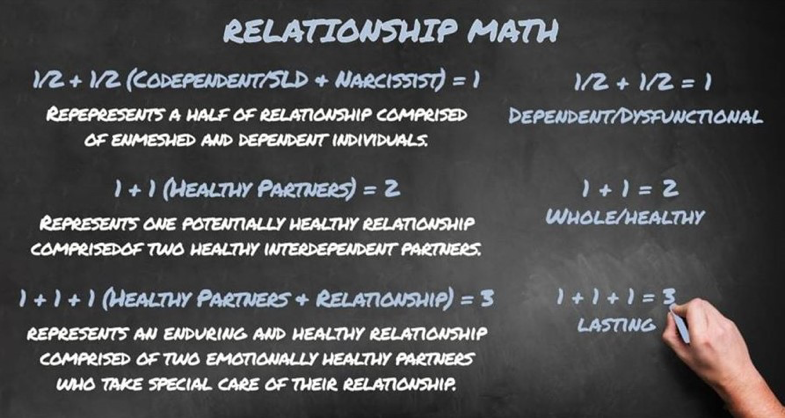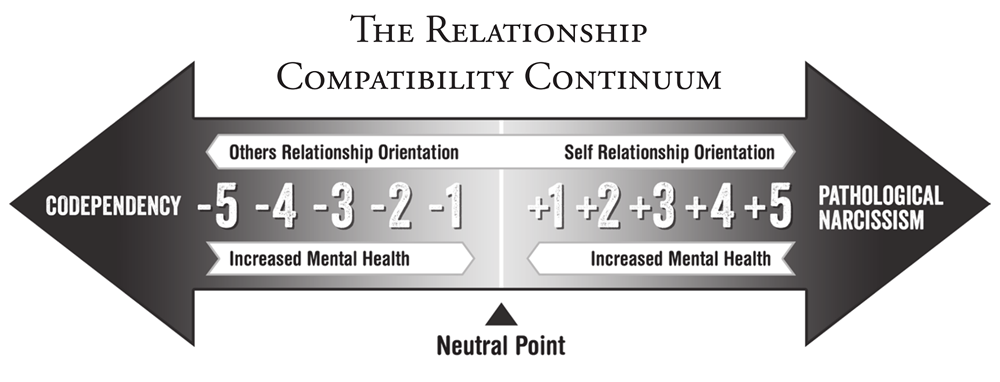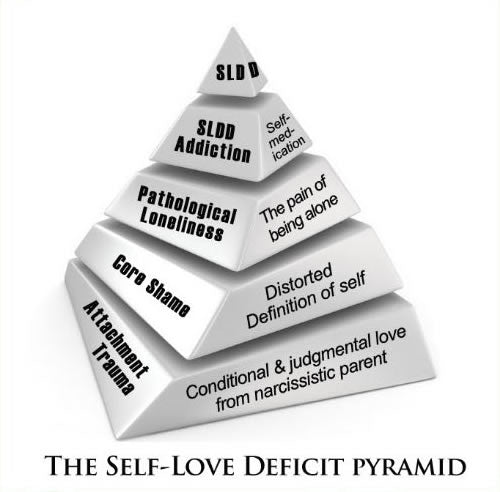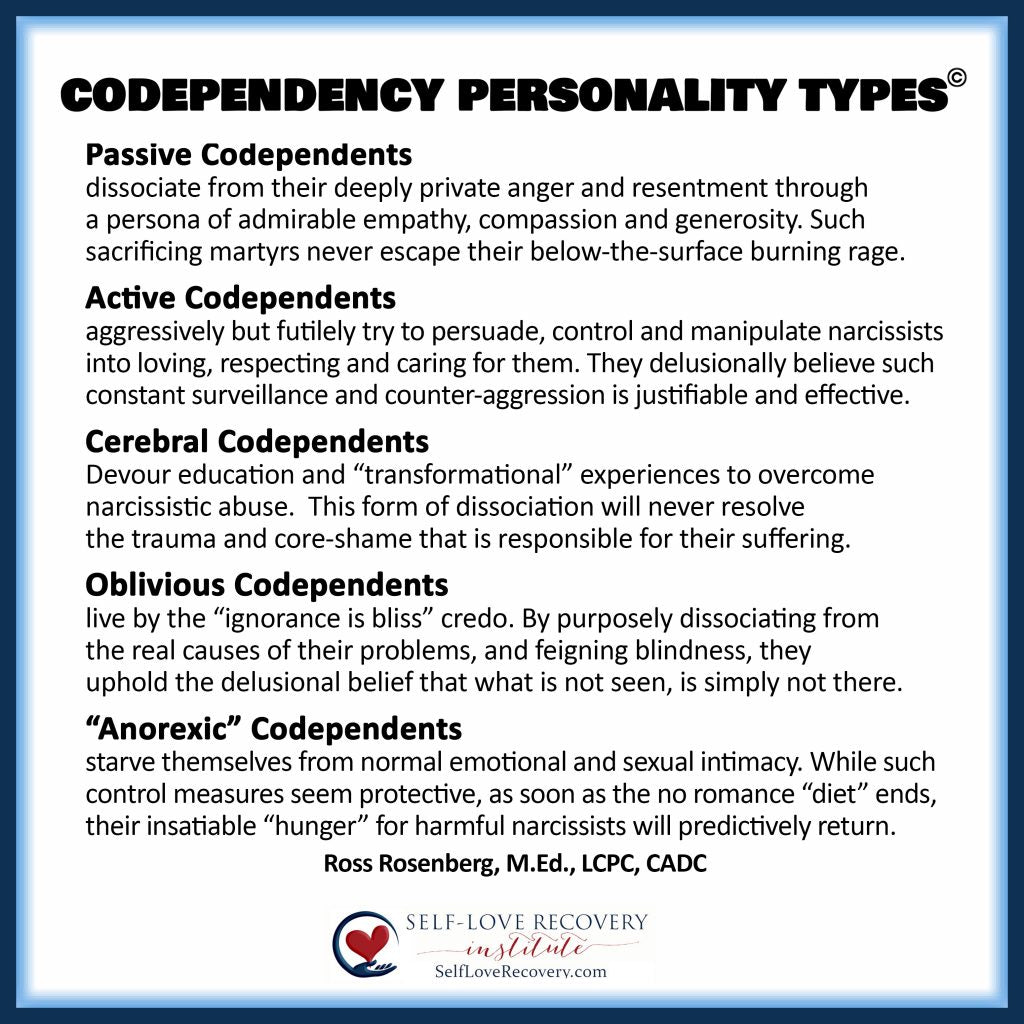What is Codependency? How is it Treated?
Self-Love Deficit Disorder, Redefining Codependency
Ross Rosenberg, M.Ed., LCPC, CADC, redefined "codependency" because it is an outdated term that connotes weakness and emotional fragility, both of which are far from the truth. The replacement term, "Self-Love Deficit Disorder" or SLDD, takes the stigma and misunderstanding out of "codependency" and focuses on the Core Shame and Pathological Loneliness that perpetuates it. The absence of self-love results in deeply embedded insecurities that render people powerless to set boundaries or control their narcissistic loved ones. The person with SLDD is often oblivious or in denial about their dysfunctional relationship patterns with narcissists. Admitting to it would require them to face their core shame and pathological loneliness.
What is Codependency?
From Chapter 3:
“Codependency is both a relationship and an individual condition that can only be resolved by the codependent. Many codependents are attracted to and maintain long-term breakup-resistant relationships with, pathological narcissists. Most codependents are selfless and deferential to the needs and desires of others over themselves. They are pathologically caring, responsible, and sacrificing people whose altruism and good deeds are rarely reciprocated.
While some codependents are resigned to their seemingly permanent relationship role, others actively, albeit unsuccessfully, attempt to change it. These people become preoccupied with opportunities to avoid, change, and/or control their narcissistic partners. Despite the inequities in their relationships and the consequent suffering, they do not end the partnerships. Codependency is not just limited to romantic couplings, as it manifests itself in varying degrees in most other significant relationships.”

Relationship Math
From Chapter 4:
“Codependents and pathological narcissists are psychologically underdeveloped people who need each other to feel good about themselves. Alone, they are empty, lonely people who need the company of another to escape their fundamental feelings of core shame and pervasive loneliness. The codependent is conscious of these, while the narcissist successfully runs or hides from them. Alone, both will always feel incomplete, unsatisfied, and lonely. Together, they both mistake complete enmeshment and the absence of loneliness as euphoric happiness and joy.”
This “½” plus “½” combination is the only mathematical formula that will work with these two self-love-starved and shame-based people, who depend on one another for any modicum of happiness. They will always need each other to feel whole. This relationship of two halves can never be a whole relationship, as both people lack the requisite self-love and individuation.”

The Relationship Compatibility Continuum
From Chapter 5
“Using simple graphics and math, the Relationship Compatibility Continuum explains and quantifies the unconscious and reflexive attraction between two people in a relationship. It explains why all people, not just codependents and narcissists, are predictably drawn to a certain type of oppositely attractive partner. It intuitively accounts for why so many people remain in deeply unhappy and dysfunctional relationships despite feeling lonely, frustrated, or resentful. Similarly, it explains why some people tend to repeat their dysfunctional relationship choices despite wanting something different.”

The Self-Love Deficit Disorder Pyramid
From Chapter 12
This pyramid illustrates that codependency is not the primary problem requiring treatment. Rather, codependency is, and always has been, only a symptom of foundational pathological forces responsible for it. In this vein, the pyramid linearly and hierarchically represents the progression of the problem. Beginning with attachment trauma and continuing with core shame, pathological loneliness, codependency addiction, and finally, the symptom known as codependency, the SLDD/codependency pyramid gives a 3D illustration of codependency, that is both clinically correct and intuitively accessible.
The Codependency CureTM is the much-anticipated follow-up to The Human Magnet Syndrome.
The "Dance"
The inherently dysfunctional “codependency dance” requires two opposite but balanced partners: a pleasing, giving codependent and the needy controlling narcissist. Like a champion dance partnership, the dancing roles are perfectly matched: the leader needs the follower and vice versa. Or, in other words, the giver-taker dance role combination enables the two to dance effortlessly and flawlessly.
Typically, codependents give of themselves much more than their partners give in return. As “generous” but bitter dance partners, they find themselves perpetually stuck on the dance floor, always waiting for the “next song,” at which time they naively hope that their partner will finally understand their needs; but sadly, it never happens.
Codependents by nature are giving, sacrificing, and consumed with the needs and desires of others. As natural followers in the “dance,” they are passive and accommodating to their partners. Although narcissists are typically selfish, self-centered, and controlling, when paired with a codependent, they are enabled to become champion dancers. As natural leaders and choreographers of the dance, their ambitions are focused only on fulfilling their needs and desires while ignoring the same for their partners.

